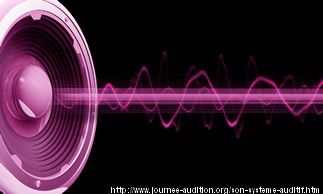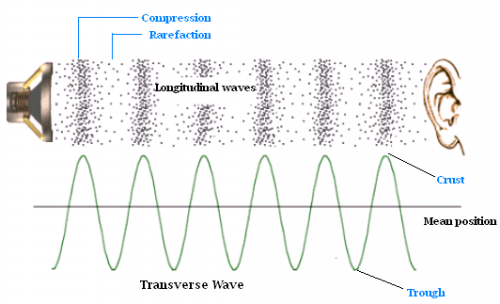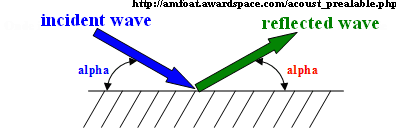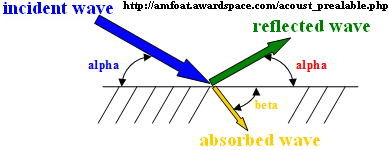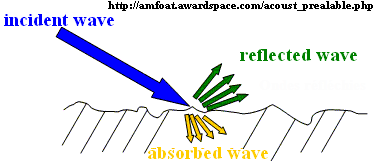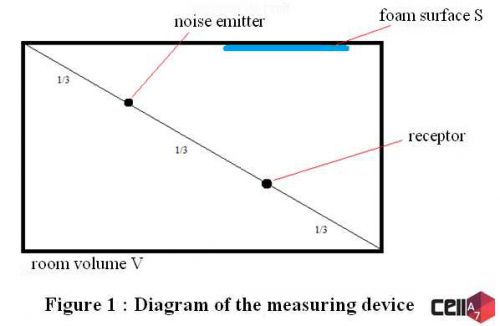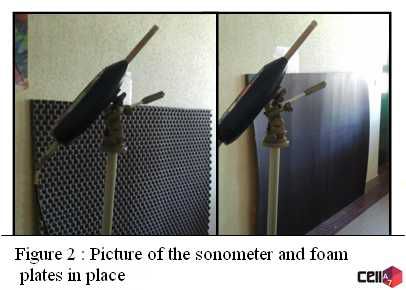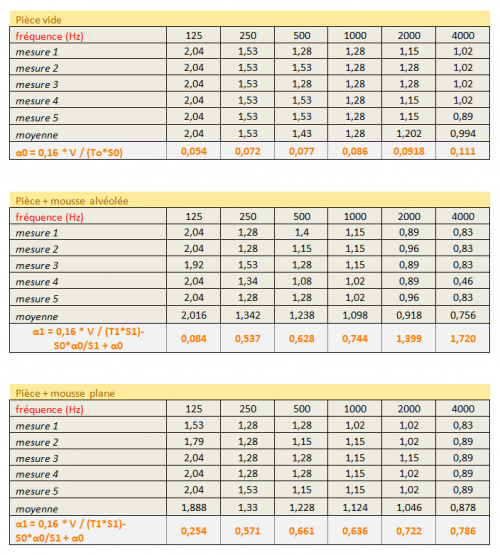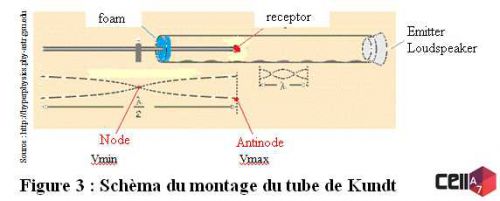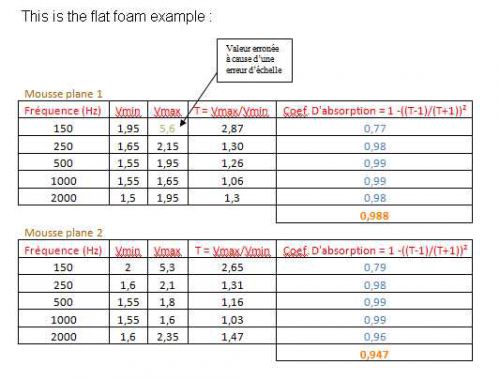Acoustic
Introduction
After having chosen to study foams, and focused on their acoustic properties, we looked for experiments in order to characterize them.
As the ENSIACET is not equipped to do acoustic measurments, we first contacted the acoustic laboratory called P.H.A.S.E (Physique de l’Homme Appliquée à Son Environnement) to help us, but they never answered.

Then, we asked the IUT of applied physics and insturmentation of Paul Sabatier University in Toulouse which gave us a positive answer. Thanks to the teacher responsible for the acoustic lecture, we got the chance to realise tow acoustic experiments on our foams. Hence, we were able to determine and compare their absorption coefficients.
Acoustics’ basics
For a better comprehension of our experiments and results, here are some simple basics of acoustics.
What is a sound?
A sound is composed of vibrations transmitted through an elastic solid, liquid or gas, with frequencies in the approximate range of 20 to 20,000 hertz, capable of being detected by human organs of hearing. A sound wave travels through the air or another medium making a pressure variation.
That is what happens when we speak. Our vocal cords vibrate and generate a high and low pressure variation in the air. The sound spreads in air at a speed of approximately 344 meters per second. Habitual speech average fundamental frequency ranges in 75–150 Hz for men and 150–300 Hz for women. Human ear can hear sounds with frequencies of vibration between 20Hz and 20000Hz.
Behavior of a sound wave
When a sound wave reaches an obstacle, four differents phenomenon happen, as described below :
- Reflection
A part of the wave is reflected by the obstacle, we call that echo or reverberation. A soundproof material has a surface made to reduce the reflection or to select useful reflections and unwanted ones.
- Transmission
A part of the incident sound wave is transmited through the mater. This is the phenomenon called acoustic isolation that makes a room soundproofed.
- Absorption
A tiny part of the incident wave is transformed in mechanical energy and in calorific energy. It occurs essentially at the surface of the obtacle. The angle beta depends on the material's preperties (absoption coefficient and thickness) and on the wave frequency.
- Diffusion
If the obstacle's surface is not smooth, the incident wave is reflected in several smaller waves. each bump is acting as a different wall for the sound wave.
Why does a porous material absorb better?
By reaching a porous material, the sound wave can easily enter in it. It generates friction between the wave and the matter, moving light fibers, and making the cinetic energy transformed in mechanical and calorific energy. The porosity must be open, that means that the cells are conected to each other ( ex: foam, glass wool).
The absorption coefficient is weak for low frequencies, and high for high frequencies. Low frequencies absorption depends on the thickness of the material and on its pores or cavities side.
With all this information we can explain why cellular material had been used in the school and what are their utility and their shape.
If this article interests you, please find further information on this website (French website)
==> http://www.lafontaudio.com/criteres.htm
Acoustics in building trade
For this experiment, we use a sonometer which record the reverberation time of a sound wave in an empty room with a known volume. The emitter broadcast a specific sound, called "bruit rose" in French, which is used as a known reference. The transmitter and the receiver are set up on the diagonal of the room (one third appart). The foam is placed against one of the walls as shown on the figure below.
It’s important to have an empty room to get the most accurate result as possible. Only one operator stays in the room during the measurment to avoid disturbance.
Three successions of five measurements are made : one for each foam and one another without foam (empty room).
The equivalent absorption area of the room without foam is :
The equivalent absorption area of the room with foam is :
A =  = S0 x α0 + S1(α1- α0) ==> α1 =
= S0 x α0 + S1(α1- α0) ==> α1 = 
So, for a volume of the room V = 80m3, a surface of the room S0= 116m2 and a foam surface S1 = 1.8*1.4 =2.52 m2, we get this results :
Which gives :
The absorption coefficient increases when frequencies increase, and it is more important for the flat foam than for the alveolated surface one, considering low frequency. However, for high frequencies (> 1000Hz), the results are reversed.
This shows that cellular materials have many properties which justify their use in the building trade isolation sector.
Kundt’s tube
This experiment consists in emitting a sound wave thanks to a loudspeaker and a signal generator. The foam sample is put on one side and the emitter on the other side. The receptor can be moved along the tube so the wave signal is received from different places (figures below).
We see the signal on an oscilloscope. This way, results of the tension from a node, maximum tension (Vmax), and from an antinode, minimum tension (Vmin), are revealed from different frequencies.
Thanks to this differents results of Vmax and Vmin, a mean value of absorption coefficient of the material is determined as :
T = Vmax / Vmin
And a, the absorption coefficient is 
2000 Hz is equivalent to the limit frequency of the Kundt’s tube. Range frequency is between Fmin and Fmax, which depend of the tube’s dimension.
Fmin = c / (2L) and Fmax = c / (2D) with : c the speed of sound in air (344 m/s)
L tube’s length
D tube’s diameter
Knowing that human can hear frequencies between 20Hz and 20 000Hz.
The average coefficients obtained are : 0.991 for the convoluted foam
0.967 for the plate foam
0.921 for the empty measure
This results can’t be considered because the equipment is old and the measure imprecise.
However, we keep the method and it could be repeat to a better characterization.

